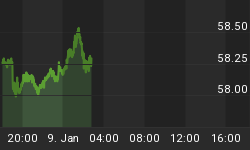Investors looking for the next big thing after a hydrocarbon economy have a panoply of options, from solar to wind, as well as biofuels.
In terms of quickly ramping up production biofuels clearly win the race, but navigating the PR fluff and reality is not a simple thing.
The three main contenders for investor dollars are algae, jatropha and camelina. All have strengths and weaknesses, leaving investors to choose amongst them. Stripped of PR flummery, the only issue is where and when production can begin on a viable commercial scale. Investors who unravel the complexities of biofuel production and have cast-iron stomachs stand to profit, but biofuel production in the U.S, while having major players like Goldman Sachs and the Carlyle Group, are moving their chess pieces around a board already gamed by the major players.
While everyone agrees that biofuels are the future, investment is lagging.
But the interest is there. Fuel and oil comprise 25 percent of civilian airlines' operating costs. When the price of jet fuel rises one cent, it increases the global cost of aviation $195 million.
Camelina as an additive is a "drop in" fuel - engines need no modification, and a series of Pentagon tests over the last two years have proven its feasibility as something to add to a 50 percent JP-8 blend. The Pentagon
So why, no U.S. production?
The answers are both complex and simple.
First, new biofuels are up against the well established ethanol lobby.
Secondly, given renewables' battle against the ethanol Goliath, there are yet exist no subsidies, crop insurance or any other incentives to bring farmers onboard to provide camelina feedstock, and farmers are hardly the most progressive green community.
Accordingly, U.S. companies such as Sustainable Oils face an uphill battle to sign up farmers, one by one.
But the technology exists, the product has been approved, most notably to fuel USAF C-17 Globemasters, as further Pentagon weapons testing continues.
Unfortunately for biofuel producers, the Pentagon only purchases fuel, and does not invest.
So, at the end of the day, the Pentagon role is passive - as for the civilian market, they are awaiting commercial volumes to be produced.
U.S. production to ramp up camelina derivatives is constrained by a lack of subsidies, crop insurance and record-high commodity prices for such alternatives as ethanol's major feedstock, corn.
But camelina's future as a civilian aircraft biofuel has been validated by the March announcement that a European consortium announced a project to produce Jet A-1 for civilian aircraft. European aircraft manufacturer Airbus and Romanian state-owned airline Tarom and a consortium of partners announced plans to establish a bio-fuel production center in Romania to manufacture fuel for the airline industry.
An American company is also prosing to produce biofuel in Uzbekistan.
So, the question is - how ironclad are investors' stomachs? The question is no longer if biofuel will be produced - only where and when. Given that it is ultimately an agricultural product, sharp investors may see their profits expand before the end of a growing season.
Source: http://oilprice.com/Alternative-Energy/Biofuels/Biofuels-About-to-Take-Off-Just-Not-Yet.html
By Dr John C.K. Daly for OilPrice.com
















